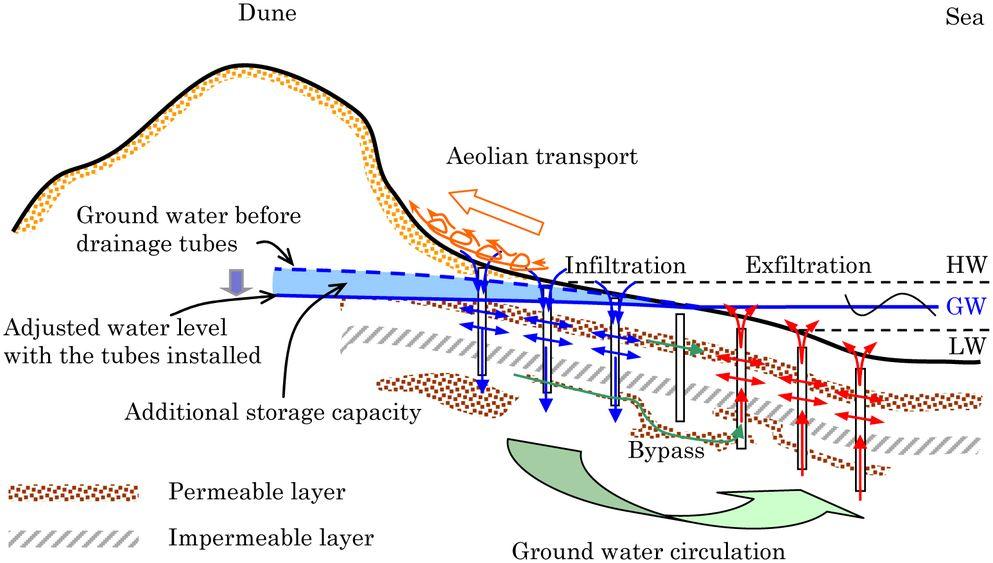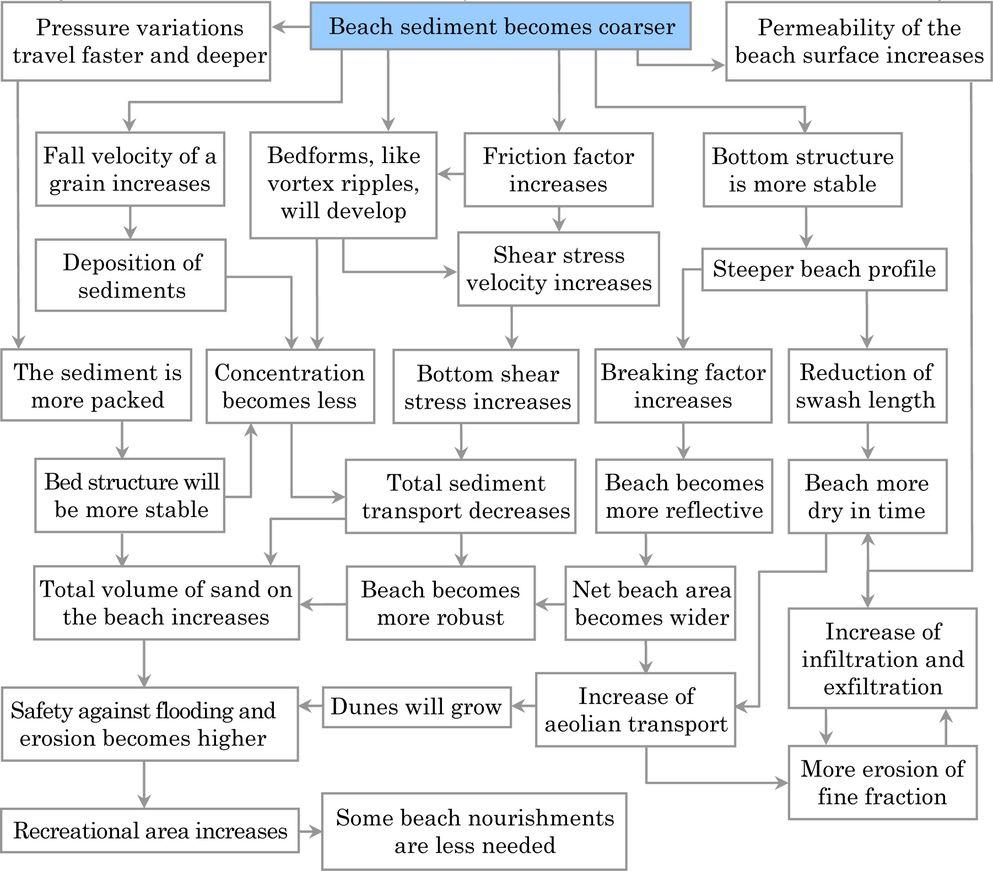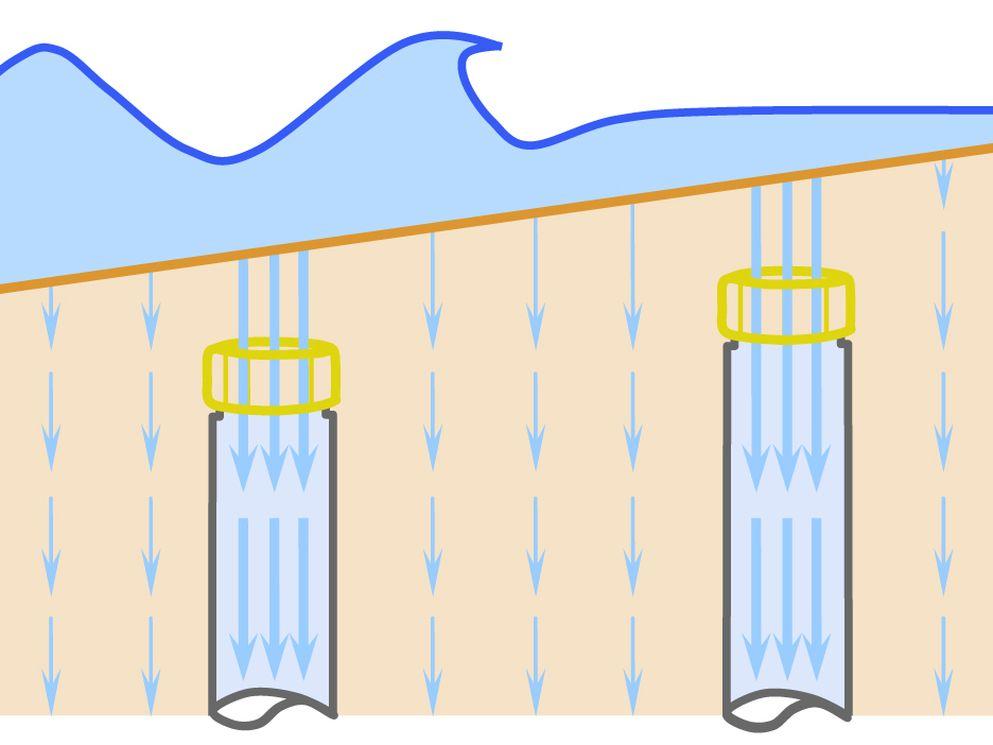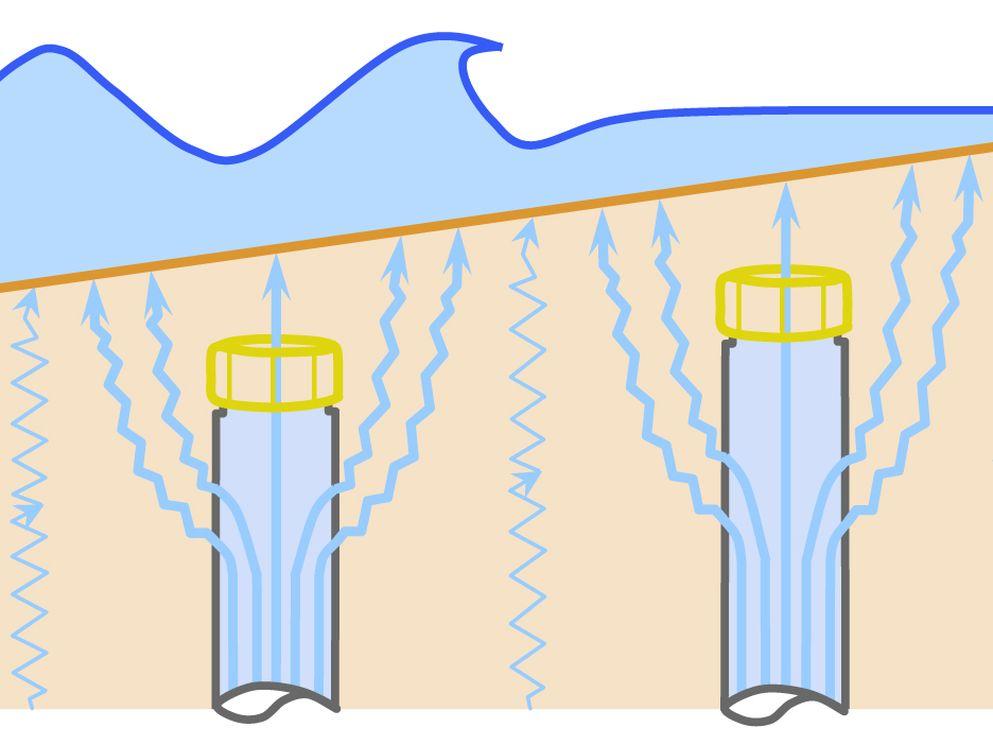Working mechanism
The Dutch pilot has been carried out with the purpose of detecting the working mechanism behind the Ecobeach system. Hence, a scientific research trajectory has been set up in 2008. The scientific investigation has been carried out by BAM cooperating with research institutes and universities from the end of 2008 until the beginning of 2010.
The results of the analysed researches show strong indications of the following working mechanism of the drainage tubes (this has been elaborated in different graduation reports):
- The beach consists of horizontal layers with each layer containing its own permeability;
- During flood conditions, the ground water table increases rapidly (due to infiltration of waves), whilst it decreases gradually during ebb conditions;
- The drainage tubes are able to connect highly permeable layers leading to drying of the beaches after flood conditions;
- From the drier beach, aeolian transport of fine sediments to the dunes is promoted;
- The sediment at the beach will get coarser leading to a higher permeability.
From the abovementioned main working mechanism, it should be noticed that:
- A higher permeability of the beach causes the water to infiltrate more rapidly leading to a smaller part of the waves to return to sea (less backwash) resulting in less sediment to be suspended and taken away by the waves;
- The working mechanism consolidates itself: coarsening of the drier beach caused by aeolian transport leads to higher permeability of the beach resulting in drying the beach more rapidly;
- An essential property of a coarser beach is the steeper slope leading to widening of the beach at higher located levels;
- Another essential property of a coarser beach is an increase in stability leading to relatively less erosion during storm conditions.
The most important indicators for this working mechanism:
- A clear coarsening of the beach has occurred at the southern test area of Ecobeach, which can be observed from the test results. The median grain diameter D50 of the sediments was approximately 30% higher than at other surrounding beaches at the end of 2009;
- This coarsening has also been observed at the Danish test area Hvide Sande at the end of 2009;
- Channelling due to the drainage tubes near the low water line has been observed due to measurements of relatively fresh water that is normally located at greater depths near the aquifer.


These effects influence the ground water circulation at the beach positively:



